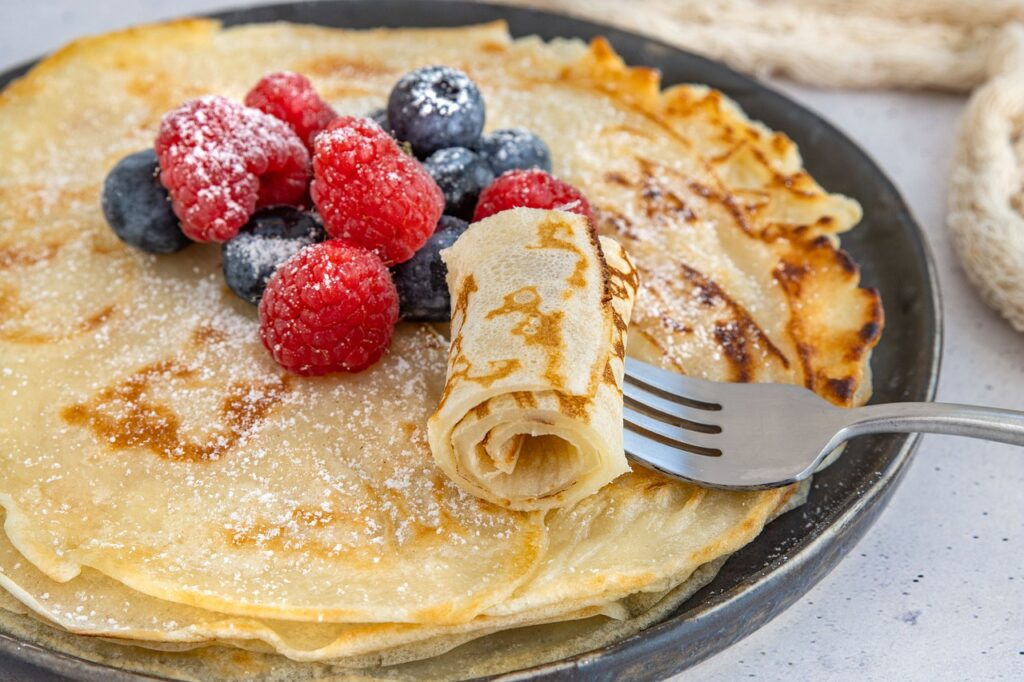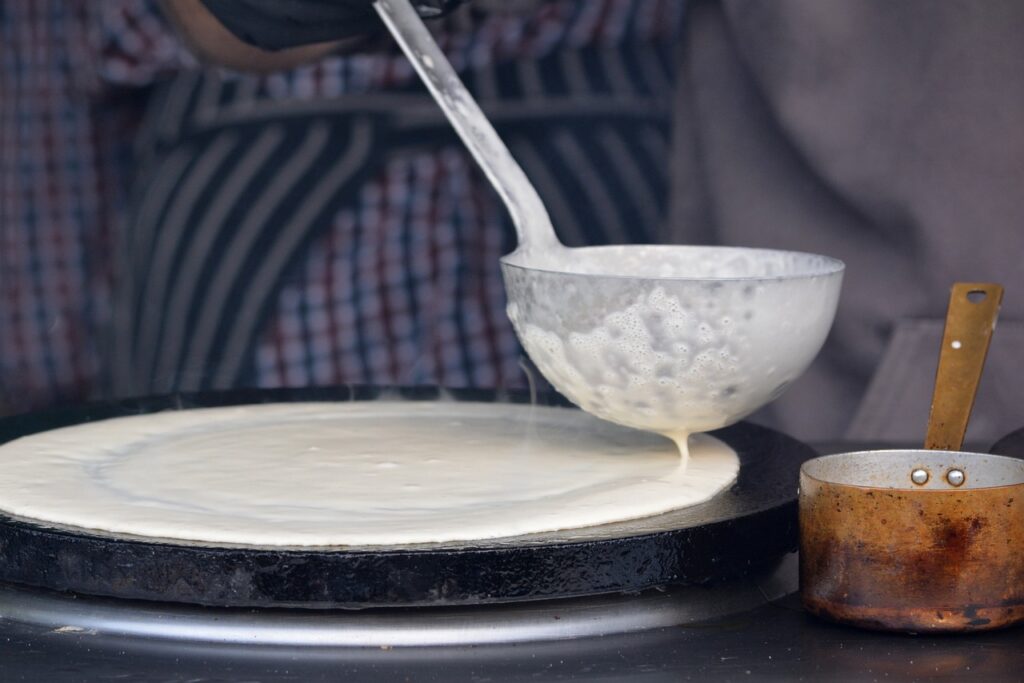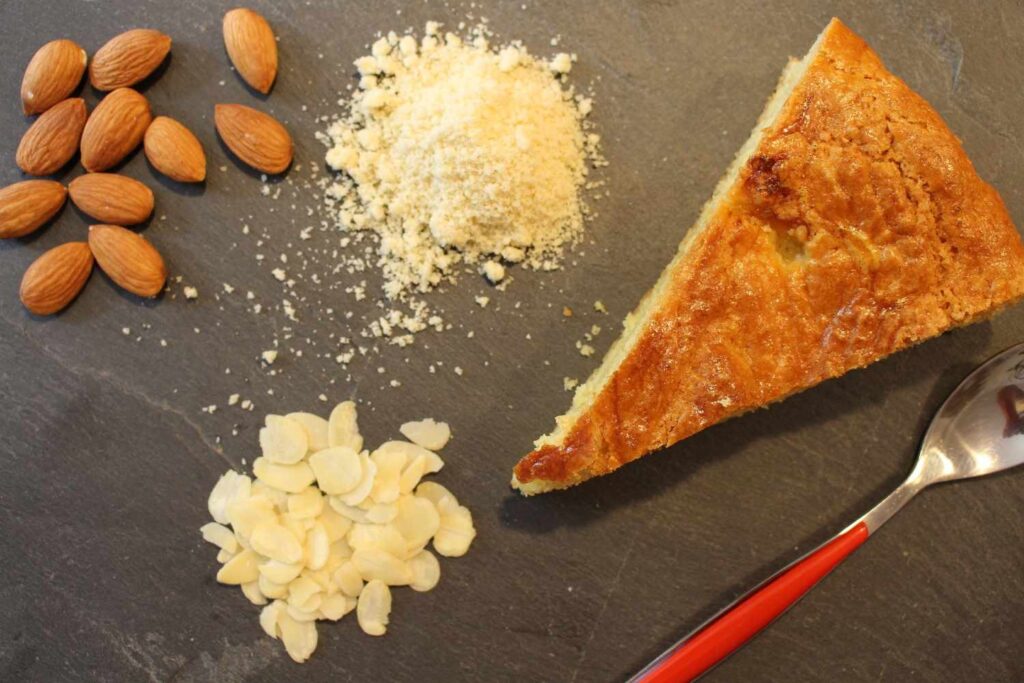Have you ever heard of La Chandeleur? After indulging in bûche de Noël during December and Galette des Rois in January, the French continue their food-themed celebrations through February with a day for eating crêpes. I had no idea the French had a holiday dedicated to crêpes until I moved to Paris. Now, I’ll take any excuse to enjoy a good crêpe! If you’re looking for the best places to indulge, I’ve included some of my favorite spots at the end of the post.
Every year on 2 February, France celebrates La Chandeleur, known in English as Candlemas. While it’s not a public holiday, it’s a beloved tradition across the country, marked by the simple joy of making and eating crêpes. By late January, supermarket shelves are stocked with flour, eggs, jam, and Nutella, all signalling the approach of this delicious celebration.

Where does Chandeleur come from?
Historical origins
Before Christians embraced Candlemas, there were pagan festivals marking this time of year. In ancient Rome, Lupercalia, a purification festival honoring the god of fertility, took place in mid-February. Revelers would parade through the streets with lit torches, celebrating the end of winter and the return of light. In the 5th century, Pope Gelasius I transformed these pagan traditions into a Christian celebration, replacing torch parades with candlelight processions, symbolizing Jesus as the light of the world. During Candlemas, priests blessed candles and encouraged the faithful to bring them home for protection.
But why pancakes?
There are several theories about why pancakes became the symbol of Candlemas. Some suggest that the round, golden shape of crêpes represents the sun and the lengthening days as winter gives way to spring. Another theory credits Pope Gelasius I with serving pancakes to pilgrims arriving in Rome as a gesture of hospitality.

Evolving traditions
Throughout France, various customs and superstitions have grown up around Chandeleur. One tradition involves flipping the first crêpe with the right hand while holding a coin in the left. If the crêpe lands flat, it’s said to promise financial prosperity for the year. In some regions, the first crêpe is folded over a coin and placed atop a cupboard, attracting good luck and bountiful harvests. The previous year’s crêpe is discarded, and the coin given to someone in need.
Luckily, crêpes are simple to make, and recipes are easy to find online. Whether you prefer sweet or savory, there’s plenty of room for creativity. In France, crêpes are commonly served with sugar, chocolate sauce, salted caramel, or whipped cream. Many French families keep a dedicated crêpe pan, or even a mini crêpe pan, on hand, to whip up the pancakes in no time.
Where to find good crêpes in Paris
Here are some of my favourite places in Paris to indulge in crêpes:
1. Breizh Café
For an authentic crêpe experience in Paris, Breizh Café is a must-visit. Renowned for its high-quality Breton-style buckwheat galettes and crêpes, the café offers inventive flavors like truffle galettes and yuzu suzette crêpes, perfectly paired with a glass of cider from Brittany or Normandy. Don’t be surprised if your cider is served in a bowl or a cup with handles—that’s the Breton way! The first Paris location opened in Le Marais, making it the brand’s flagship in the city. Since then, Breizh Café has expanded across Paris, with additional locations in Montorgueil, Saint-Germain, and Batignolles. It’s very popular so you should book a table in advance.

2. La Crêperie de Josselin
Located in the heart of Montparnasse, this cozy, traditional Breton crêperie with beautiful decor and tiny tables. It also serves some of the most generous and authentic crêpes in Paris. Located at 67 rue du Montparnasse, this street is packed with crêperies—but not all of them deliver on quality. After trying several, I can confidently say this spot stands out as a real winner.
Bon Appétit!
Disclosure: This post contains affiliate links and I receive a commission if you visit a link and buy something on my recommendation. Purchasing via an affiliate link doesn’t cost you any extra, and I only recommend products and services I trust.



